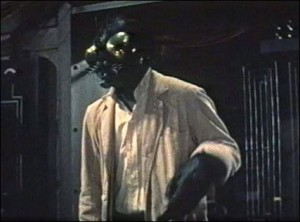2015
Apr
16
The Ins and Outs of Teleportation
The transporters of Star Trek are fairly well developed for a television series. There is all kind of talk about matter streams and quantum resolution, all of which actually makes quite a bit of sense regarding teleportation. But if you look closer, there are some technical and scientific issues remaining. How does a matter stream passing through a planetary atmosphere differ from a particle beam weapon? How does putting every atom in the right place for a ham sandwich (food replicator) mean less quantum resolution than doing so for a person (transporter)? But even if these technical points are resolved satisfactorily, and someone succeeds in building a bulk teleportation device, that is where the can of worms actually pops open and the philosophical ghosts start rising from their graves.
I talk about some of this in Korvoros, and rather than make you buy the book, I'll quote some of it here.
“You ever travel by one of these?” Tim asked.
“Maybe half a dozen times,” she said. “It takes a little while to get used to it. It can be pretty scary the first time.”
“Yeah, I suppose so,” he agreed. “Especially if you weren’t expecting it. You know, I think the scrambler amazes me more than anything else I’ve seen.” He permitted himself to enjoy some excitement. “That this machine can convert a person to energy, send it somewhere else, and put him back together again.”
Wendy stifled a chuckle. “Who told you that?”
“Well…. Nobody.” He shrugged. “I just assumed it.”
“Bad assumption. Not even Dyrrya Industrial can handle that much energy in raw form — aside from the space-stress accumulators and rarefaction field — let alone control it with any kind of precision. Besides, there’s a serious ontological problem with that approach.”
“A what problem?”
“Ontological. Dealing with the nature of existence. Or maybe epistemological, if you prefer. Either way, it’s a bucket of worms.”
“OK, smarty. Go on. Explain it to me.”
“A thought experiment. Suppose you were converted to energy. In the interval between then and when you are reassembled, are you dead? If you are, do you come back to life? I guess perhaps this is a theological problem, after all. But it goes further. Since all energy is identical, they wouldn’t need to actually send the energy, just the information necessary to recreate you. The same argument would hold if you were just broken down into elementary particles. Does that mean that all you are is the information required to make you?”
“Interesting point,” he conceded, staring at the machine with more respect than a moment before. “It does sound a bit crazy.”
“So let’s proceed to utter insanity,” she continued. “If the information is all that’s important, suppose that two receiving stations happened to pick up the signal and each one makes a new instance of you. Which would be the real one? Or would either of them really be you? You could be dead and they could be fakes that no one could tell from the original because all the memories are duplicated too.”
“Shit.” He looked around at the device as if it were a monster. “You have a way of spoiling things. So how does it work, then? Magic?”
“As far as I’m concerned, yes. I have no idea how it works, and I probably never will. It uses a heterodyning technique to modulate your body en masse onto an energy field in some kind of higher order abstract space.”
Tim picked up the idea. “So by never really changing you or taking you apart, you avoid the philosophical headaches.”
“Yeah. Like the ghost of Hylly Hahrl.”
I left in the line about Hylly Hahrl just to pique your interest. The ghost matter is an unrelated but philosophically similar problem.
A research team in Germany developed a teleporter of sorts that shaves tissue-thin layers off an object one at a time, scans it, and transmits the signal to another location where it gets reconstructed with a 3D printer. That sounds like an uncomfortable and awkward way to travel, but it is essentially the same process as the whole dematerialization/rematerialization process.
So, let's allow our minds to wander.
-
You die and arrive at the pearly gates, but you can't go to heaven or hell, because you're just a teleporter reproduction.
- You come home unexpectedly and find your wife in bed with you.
- Suppose that reproductions, having identical brain structure, are perfectly telepathic.
- A scientist goes back in time, teleports Einstein, and keeps a copy.
- You and your clones agree to attempt to reconstruct yourselves into one person, but you don't get the alignment quite right and you go through life as this blurry ghostly thing. Ewwwww! I don't think The Fly has anything over that!
- There's a new twist on theft and counterfeiting. Someone plugs a device into a commercial teleporter that replicates all the money and gold that goes through.
These ideas represent just a few minutes of science-fiction-writer speculation. Do you have any ideas of your own?

















Comments
There are no comments for this post.
You must be logged in to post a comment.